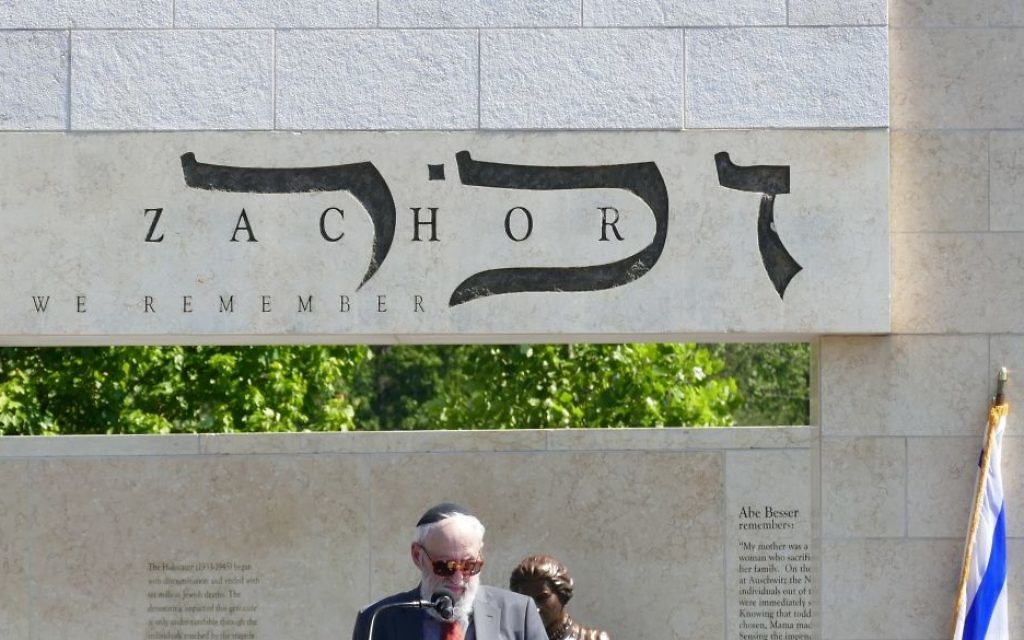JCC Ceremony to Honor Holocaust Heroine
Author Tilar J. Mazzeo will help commemorate Yom HaShoah by sharing the story of Warsaw's Irena Sendler.

Irena Sendler isn’t a household name in the Jewish world, but, despite her 4-foot-11 height, she towers above most of the righteous gentiles who risked their lives to save Jews from the Nazis.
Sendler (or Sendlerowa in Polish) was the brains and guts behind a ring of Polish non-Jews and Jews responsible for spiriting 2,500 children out of the Warsaw Ghetto and saving them from destruction there or in the death camps.
Tilar J. Mazzeo tells the remarkable story of Sendler in “Irena’s Children,” the rare Holocaust history that leaves you hopeful about humanity despite the horror.
Get The AJT Newsletter by email and never miss our top stories Free Sign Up
Mazzeo, who couldn’t participate in the Book Festival of the Marcus Jewish Community Center in November because of a scheduling conflict, will recount the story of Sendler and occupied Warsaw during the JCC’s Yom HaShoah commemoration Sunday, April 23. (Mazzeo also will speak that night at 7:30 inside Zaban Park in a Page From the Book Festival event. Tickets are $10 for JCC members, $15 for others.)
Mazzeo must deal with some less savory aspects of Sendler’s life, specifically her failed marriage and her longtime affair with a married Jewish man.
That messy personal life may have played a part in her determined efforts to slip into and out of the ghetto while smuggling supplies in and people out, and it likely reflected her modern, anti-traditionalist attitudes, which helped her see the Jews in the ghetto as fellow people, not subhumans or non-Poles.
Still, “Irena’s Children” reads like a novel, thanks to Mazzeo’s ability to apply vivid writing to her extensive research in archival documents and interviews with survivors of World War II Warsaw and their descendants.
That research enables Mazzeo to get inside the heads of real people as if they were characters she created, so that she can resolve conflicting evidence, re-create conversations, and even project the thoughts of Sendler and others. It’s a technique my college adviser, a professor of ancient history, referred to as “I can’t prove it, but I know it’s true.”
Mazzeo recounts the story of one group of children Sendler couldn’t save: a couple of hundred children in a makeshift ghetto orphanage run by a friend of hers, Dr. Janusz Korczak. It was August 1942, when the Germans were shipping thousands of Jews a day from the ghetto to the death camps, and the SS marched feeble orphans and the sickness-weakened Korczak more than three miles through the summer heat to get to the railcar that would take them to their deaths at Treblinka.

By Tilar J. Mazzeo
Gallery Books, 318 pages, $26
“That morning his back was straight and he was carrying one of the weary toddlers,” Mazzeo writes. “Am I dreaming? The thought floated through Irena’s mind. Is this possible? What is the possible guilt of these children?”
Mazzeo has Sendler notice a heartbreaking detail: The children, each allowed to bring a single personal possession, carried dolls carved by her former psychology professor, which she had smuggled into the ghetto for them.
Somehow, such horrors strengthened the resolve of Sendler and her friends to work ever harder to rescue Jews rather than try to save themselves.
Naturally, more than a few of Sendler’s circle didn’t survive the Nazi occupation to live instead under Communist oppression. But, as far as Mazzeo could uncover, none of them gave up. None of them stopped fighting. Almost none of them broke under Gestapo torture and betrayed their comrades.
In addition to Mazzeo’s presentation, the JCC ceremony will include readings and prayers for the victims of the Holocaust and the lighting of six torches to represent the 6 million murdered Jews.
Through Sendler’s efforts, however, thousands of Jews survived Warsaw despite the Nazis’ best efforts to snuff them out.
What: Yom HaShoah commemoration
Where: Besser Holocaust Memorial Garden, Marcus JCC, 5342 Tilly Mill Road, Dunwoody
When: 3:30 p.m. Sunday, April 23
Details: Free; www.atlantajcc.org or 678-812-4161




comments